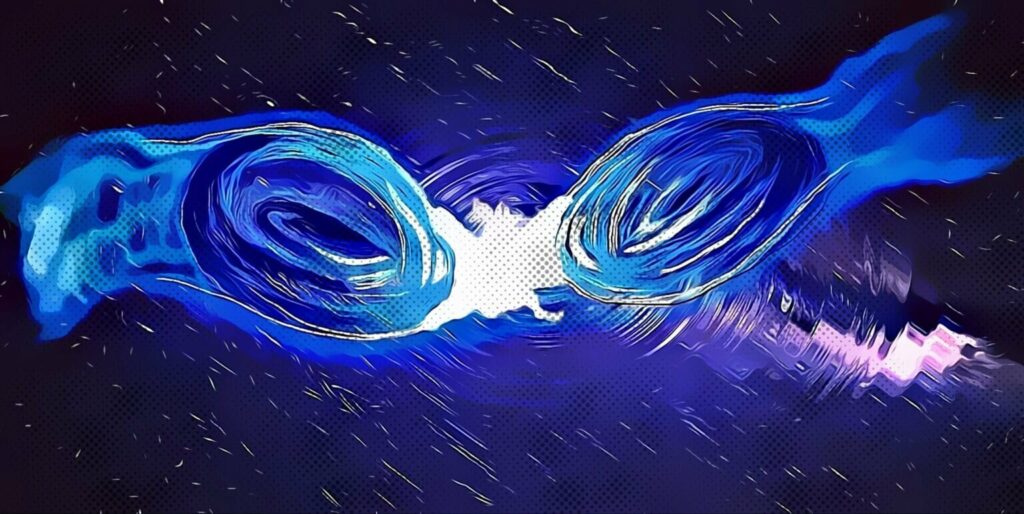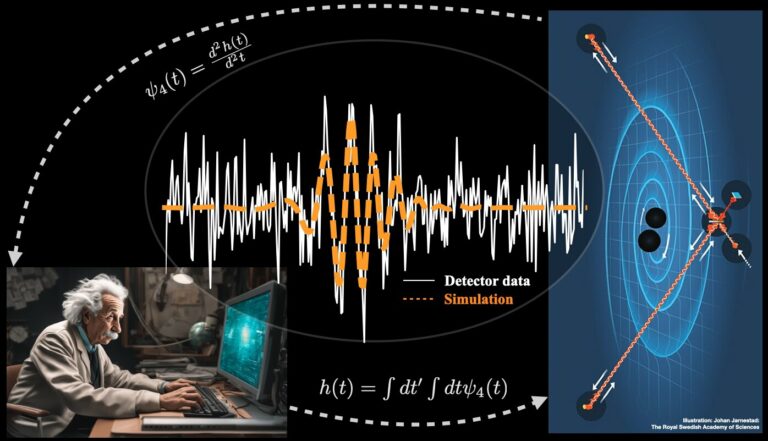Researchers Reorient Gravitational-Wave Data Analysis: Is the Fusion Detected by LIGO and Virgo Attributable to Dark-Matter Stars?
Gravitational waves, which are disturbances in the spacetime fabric propagating at the speed of light, are generated during cataclysmic cosmic events like black-hole mergers, supernovae, or the Big Bang itself. Since their inaugural detection in 2015 and subsequent monitoring through three observational phases, the Advanced LIGO and Virgo detectors have identified approximately 100 such waves.
These observations have provided insights into the black-hole population in our universe, enabled the study of gravity in extreme conditions, and facilitated the understanding of element formation, such as gold or platinum, during neutron star mergers. The LIGO and Virgo detectors function as exceptionally precise instruments, serving as humanity’s most accurate rulers, capable of measuring the subtle distortions of spacetime caused by gravitational waves.

To detect and categorize these waves, scientists rely on comparing detector data to theoretical models or “templates” representing the expected waves from various sources. Analogous to the Shazam app identifying music, templates guide the identification of gravitational wave sources. While there are multiple methods to generate gravitational-wave templates, the most accurate approach, often the sole one, involves intricate numerical simulations performed on some of the world’s most powerful supercomputers.
However, a challenge arises as many simulations output the Newman-Penrose scalar, the second derivative of the quantity read by detectors known as strain. This necessitates performing two-time integrals on simulation results. Dr. Isaac Wong, co-lead of the study from the Chinese University of Hong Kong, elucidates, “While taking integrals may sound simple, this operation is subject to well-known errors that we can only handle for rather simple sources like the merger of black holes in circular orbits that LIGO and Virgo have been detecting so far. Moreover, doing this is not straightforward, requiring quite some hand tuning that involves human choices.”

Dr. Calderón-Bustillo elucidates, “While this adjustment may seem like a trivial tweak, it brings significant advantages. Primarily, it significantly streamlines the process of generating templates for comparison with LIGO-Virgo data. Most importantly, we can now execute this safely for any source that supercomputers can simulate.” The team has been particularly intrigued by the prospect that certain signals might originate from something more exotic and enigmatic, referred to as boson stars.
Dr. Sanchis-Gual, a co-author from the University of Valencia, comments, “Boson stars exhibit behavior akin to black holes but differ fundamentally by lacking the two most distinctive (and somewhat problematic) features of black holes: their no-return surface, known as the event horizon, and the singularity in the interior, where the laws of physics break down.”
Although the team could simulate these sources on supercomputers, Prof. Alejandro Torres from the University of Valencia notes, “We were struggling to understand how to transform the output of our simulations into something comparable with the detector data, due to well-known issues. The idea of taking derivatives from the data made things extremely simple.” In a separate study published in Physical Review D, the team applied their novel technique to compare gravitational-wave events observed by LIGO and Virgo with a comprehensive catalog of boson-star merger simulations. Prof. Carlos Herdeiro from the University of Aveiro suggests, “If boson star mergers exist, these could contribute to at least part of what we recognize as dark matter.”
The team found that one of the most enigmatic events to date, GW190521, aligns with such simulations. This reinforces a similar result obtained by the team in 2020 using a significantly smaller catalog. Samson Leong, a Ph.D. student from the Chinese University of Hong Kong, engaged in both studies, expresses excitement, stating, “It’s very exciting to see that GW190521 is consistent with a boson-star merger. This underscores the potential role of these exotic objects in the future of gravitational wave astronomy.” Prof. Tjonnie Li from K.U. Leuven adds, “This result also demonstrates the power of our new approach. By simply taking derivatives, we’ve opened a broader window for exploring and understanding the cosmos through gravitational waves.”
This article is republished from PhysORG under a Creative Commons license. Read the original article.
Do not forget to share your opinion with us to provide you with the best posts !




0 Comments